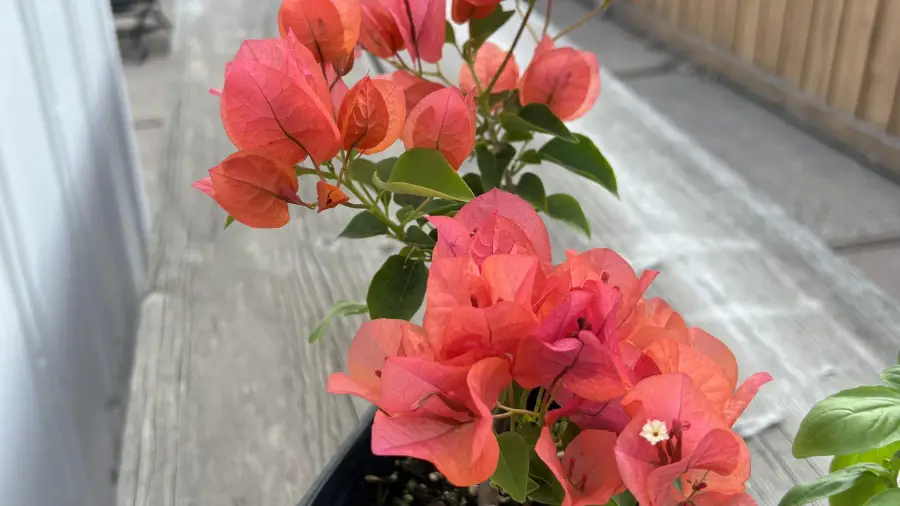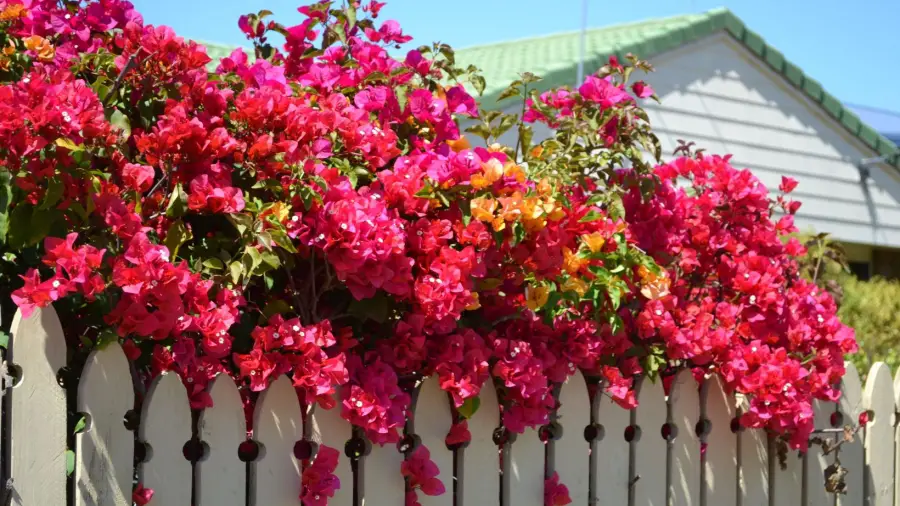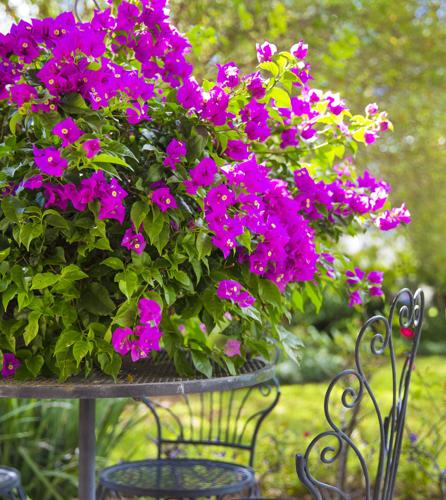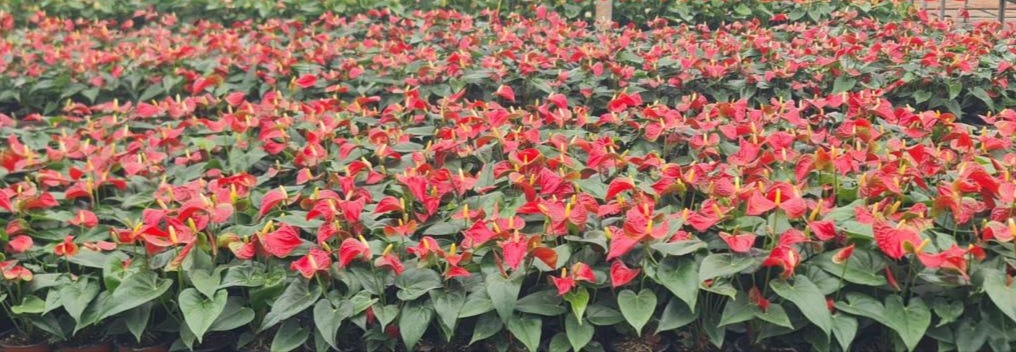The best place to plant bougainvillea is in a sunny, well-draining location. Full sun exposure and warm temperatures optimize the plant’s blooming potential.
Bougainvillea thrives in regions with hot and dry climate conditions, making locations like Southern California, Florida, and Texas ideal for outdoor planting. It’s crucial to select a site where this vibrant plant can receive more than six hours of direct sunlight daily to ensure a spectacular display of its colorful bracts.
Caring for bougainvillea involves understanding its preferences for sunlight and soil conditions. Despite being drought-tolerant once established, a bougainvillea’s initial growth period requires regular watering until its roots have spread out. Typically found in Mediterranean or tropical environments, this hardy plant can also flourish in pots when space or climate restricts outdoor planting. With proper support structures such as trellises or fences, bougainvillea can be trained to climb, enhancing its ornamental appeal.

Credit: http://www.telegraphindia.com
Table of Contents
Introduction To Bougainvillea
Bougainvillea, a genus of thorny ornamental vines, bushes, and trees, is the quintessential climber known for its vibrant displays of color and lush foliage. Originating from South America, this plant has gained popularity across the globe for its ease of care and stunning floral arrangements. Ideal for adding a splash of color to any landscape, bougainvillea thrives in locations where it can soak up the warmth and brilliance of the sun.
Understanding The Bougainvillea Plant
The key to a healthy bougainvillea starts with a comprehensive understanding of the plant’s needs. Bougainvillea is a sun-lover and requires at least 6 hours of sunlight daily to flourish. It’s also known for its preference for well-drained soil, which helps prevent root rot. When planting bougainvillea, ensuring enough space is crucial, as these plants can grow quite large and require room to spread their vibrant bracts, which are often mistaken for flowers.
Typically, bougainvilleas bloom in cycles and are evergreen in warmer climates, making them a year-round source of beauty. However, in cooler climates, they may lose leaves but can rebound when warmer temperatures return.
The Aesthetic And Environmental Benefits Of Bougainvillea
Beyond its obvious visual appeal, planting bougainvillea comes with numerous environmental benefits. These plants can provide natural cooling for homes by shading walls from intense sun. Furthermore, bougainvilleas can also improve air quality and offer habitat and food for pollinators like bees and hummingbirds.
- Visual Vibrancy: Bright bracts in shades of pink, red, orange, purple, and white.
- Natural Cooling: Planting alongside buildings to reduce heat absorption.
- Air Quality Improvement: Absorption of carbon dioxide and release of oxygen.
- Wildlife Support: Provides nectar and shelter for beneficial pollinators.
Optimal Conditions For Bougainvillea Growth
Bougainvillea, a vibrant cascade of color that can turn any garden into a tropical paradise, thrives when planted in conditions that mimic its native habitat of South America. Understanding the optimal conditions for Bougainvillea growth is essential to enjoy its lavish, plentiful blossoms and vigorous growth. These conditions include ample sunlight, a compatible climate, and soil that offers proper drainage to meet the plant’s unique requirements.
Sunlight Requirements For Maximum Blooming
To achieve the most spectacular show of blooms, planting Bougainvillea in a location that receives full sun is critical. At least six hours of direct sunlight per day is the baseline to encourage the prolific flowering for which this plant is famed. A south-facing wall or trellis provides an ideal backdrop to both support the vine and maximize its sun exposure.
Ideal Climatic Conditions: Heat And Humidity
Bougainvillea’s preference for heat and moderate humidity levels makes them perfect for certain climates. Regions with warm temperatures year-round are best, as bougainvillea can endure high heat but not frost. Protecting plants from cold drafts and freezing temperatures is pivotal for survival and bloom production. Although they can tolerate a range of humidity levels, too much moisture can be detrimental, leading to fungal diseases.
Soil Preferences And Drainage Needs
The right soil mix and proper drainage are fundamental to Bougainvillea care. This plant prospers in well-draining soil, as too much water retention can cause root rot and weaken the plant. The ideal soil should be acidic to slightly alkaline (pH 5.5 to 6.5) with good aeration. Amending garden soil with perlite or coarse sand can improve drainage capabilities, creating an environment where Bougainvillea can truly flourish.
Planting Bougainvillea For Success
Vibrant and vigorous, bougainvillea bursts with sensational colors, bringing life to any garden. Selecting the ideal location and understanding the preferences of these flamboyant plants are crucial for a show-stopping display. Planting bougainvillea for success hinges on a few key considerations: where to plant, the container versus ground debate, and the timing of planting, each of which can influence the health and flowering prowess of your bougainvillea.
Choosing The Best Planting Locations
Bougainvillea thrives in sun-drenched areas that mimic its native tropical and subtropical habitats. Aim for a spot where the plant will receive at least 6 hours of direct sunlight daily. Adequate exposure to the sun encourages prolific blooms and helps plants maintain vibrant leaf coloration. Planting near a south-facing wall or fence not only provides the necessary sunlight but also shields the bougainvillea from cold winds, which can be detrimental. Here are some ideal locations:
- Against a warm, sunny wall
- On south-facing slopes or raised ground
- Near patios or pathways, where they can be admired
Always ensure the site has well-draining soil to prevent root rot, a common issue with bougainvillea. If drainage is a concern, consider raising the planting area or adding grit to the soil mix.
The Pros And Cons Of Planting In Pots Versus Ground
Planting bougainvillea in containers offers flexibility in positioning and can enhance patios or balconies. Potted plants tend to bloom more as crowded roots encourage flowering. However, they also require more frequent watering and can be more susceptible to temperatures that drop below freezing. On the other hand, planting in the ground allows plants to grow larger and requires less maintenance. Consider the following advantages and drawbacks:
| In Pots | In Ground |
|---|---|
| Increased bloom due to root constriction | Greater potential for plant size and spread |
| More susceptible to frost | Better cold resistance in the ground |
| Easier to manage and relocate | Requires more space and permanent location |
Seasonal Considerations: When To Plant Bougainvillea
The timing of planting can greatly impact the success of establishing bougainvillea. Planting should coincide with the onset of the warm season. In most regions, this falls between late spring and early summer, after the threat of frost has passed. This timing allows the plant to establish its roots before facing the stress of winter. Here are some timely tips:
- Plant after the last frost date for your region
- Avoid planting during peak summer to prevent heat stress
- Water well after planting, then minimize watering to encourage strong root growth

Credit: http://www.billyheromans.com
Special Care For Thriving Bougainvillea
Bougainvilleas are vibrant and versatile plants known for their showy paper-like blooms and lush growth. While they can provide a stunning visual impact in any garden, special care is crucial to ensure that these eye-catching plants reach their full potential. From strategic watering to the nuances of pruning, fertilization, and pest control, this section details the essential methods to foster flourishing bougainvilleas.
Watering Strategies: Balancing Needs And Over-water Risks
Bougainvilleas have specific watering needs that, if met with precision, can significantly enhance their vibrancy. The key is to balance adequate hydration without the peril of over-watering, which can lead to root rot. A deep watering once every few weeks is generally sufficient, but this may vary depending on climate conditions.
- Let the soil dry out before watering again.
- Reduce watering in cooler months to prevent excess moisture.
- Ensure proper drainage to avoid water logging.
Offering the right amount of water encourages healthier and more abundant blooms.
Pruning And Training Techniques For Shapely Growth
Pruning serves a dual purpose for bougainvilleas: maintaining shape and encouraging new growth. By carefully pruning your plant, you can guide its form and ensure a more appealing aesthetic while also stimulating it to produce more of its striking flowers.
- Trim after the flowering cycle to shape and promote blooming.
- Use clean, sharp tools to make precise cuts.
- Consider using supports, like trellises, for climbing varieties.
Training bougainvilleas when they’re young helps establish a strong structure for future growth.
Fertilization And Pest Control For Healthy Plants
Like all plants, bougainvilleas benefit from the right nutrients to support their vibrant displays and vigorous growth. A balanced fertilizer, applied during the growing season, will keep your plants robust and flowering profusely. It’s vital to be on the lookout for pests that can potentially harm your plants.
- Apply a high-potassium fertilizer every four to six weeks during the growing season.
- Avoid high-nitrogen fertilizers, which can promote foliage at the expense of blooms.
- Inspect regularly for signs of pests like aphids, whiteflies, or spider mites and treat accordingly.
Effective pest management and proper fertilization lead to healthier, more resilient bougainvilleas.
Troubleshooting Common Issues
Despite bougainvillea’s reputation for being relatively low-maintenance, gardeners occasionally face challenges that prevent these vibrant vines from showing off their full potential. Addressing common issues proactively can keep your bougainvilleas blooming marvelously. This section highlights some of the typical problems and offers practical solutions to ensure your plants thrive in their environment.
Addressing Lack Of Blooms: Tips To Encourage Flowering
Bougainvillea’s most sought-after feature is its captivating blossoms. If your plant isn’t flowering as expected, consider these solutions:
- Light Exposure: Ensure the plant is getting enough sunlight—ideally more than 6 hours of direct sun daily.
- Proper Pruning: Prune at the right time, after a flowering cycle, to foster new growth that can produce blooms.
- Fertilization: Use a high-phosphate fertilizer to promote blooming while being careful not to over-fertilize.
- Watering Practices: Allow the soil to dry out between watering sessions to mimic the bougainvillea’s natural dry conditions.
Protecting Bougainvillea From Frost And Extreme Cold
To safeguard your bougainvillea against cold damage:
- Plant Placement: Choose a warm, sheltered location if possible.
- Frost Protection: When frost is forecasted, cover your plant with burlap or frost cloth.
- Potted Plants: Move container-grown bougainvilleas indoors during the coldest months.
Combatting Diseases And Pests Specific To Bougainvillea
Bougainvillea may encounter diseases and pests, such as root rot or aphids. Address these issues promptly:
- Disease Prevention: Plant in well-draining soil and water sparingly to prevent root rot.
- Regular Inspection: Frequently check leaves for signs of pests or disease.
- Natural Predators: Encourage beneficial insects like ladybugs that prey on common pests.
- Appropriate Pesticides: Use insecticidal soaps or neem oil treatments to address infestations without harming the plant.
:max_bytes(150000):strip_icc()/GettyImages-1313337338-2-324c6fd923dc4d2cbdac0591eda8be1e.jpg)
Credit: http://www.southernliving.com
Creative Uses And Inspirations
The vibrant hues of bougainvillea are not only a testament to nature’s beauty but also a versatile tool in the hands of a creative gardener. With its lush, cascading vines and brilliant bracts, bougainvillea offers endless inspiration for transforming spaces. Here, we explore inventive ways to incorporate bougainvillea into various gardening and landscaping projects.
Architectural And Landscaping Ideas With Bougainvillea
Integrating bougainvillea into architecture and landscapes can create stunning visual interest and add a Mediterranean charm to the surroundings. Bougainvillea’s ability to climb makes it ideal for softening hard lines of buildings or concealing garden walls. Explore these innovations:
- Arbors and Pergolas: Train bougainvillea over arbors for a natural sun filter or use it to create a colorful pergola roof.
- Privacy Screens: Dense bougainvillea vines can be a natural barrier, providing privacy while adding beauty.
- Trellis Accents: A standalone trellis covered in bougainvillea can be a focal point in gardens.
- Facade Enhancement: Bougainvillea can bring life to a dull exterior when trained to climb along the siding of homes or garden sheds.
Bougainvillea In Container Gardening And Bonsai
Container gardening is a fantastic way to showcase the versatility of bougainvillea. When grown in pots, bougainvillea can thrive on patios, balconies, and indoors. Its adaptability also lends itself well to the art of bonsai. Below are a few tips:
- Choose a container that complements the vibrant color of your bougainvillea.
- Ensure your container has a good drainage system to prevent root rot.
- Consider smaller bougainvillea varieties for a perfect bonsai project.
Remember, container-bound bougainvilleas require more frequent watering compared to those planted in the ground.
Inspirational Garden Themes And Color Combinations
Bougainvillea is available in shades ranging from pink to magenta, purple to red, or even orange and yellow. Pairing different colors can create specific ambiances or highlight garden themes:
| Theme | Color Combinations |
|---|---|
| Tropical Paradise | Magenta and orange bracts interspersed with lush green foliage. |
| Romantic Retreat | Soft pinks and purples with touches of white for a delicate balance. |
| Desert Oasis | Intense red bougainvilleas against cacti and warm-toned rocks. |
Choose shades that resonate with your desired theme or use a monochrome approach for a bold, modern effect. Either way, bougainvillea’s color palette is sure to enlighten and energize any garden it graces.
Frequently Asked Questions On Best Place To Plant Bougainvillea
Is Bougainvillea Better In Pots Or Ground?
Bougainvillea thrives in pots where root confinement can lead to more abundant blooming.
Where Should You Not Plant Bougainvillea?
Avoid planting bougainvillea in shady areas, as they require full sun to bloom brightly.
What Is The Secret To Growing Bougainvillea?
Choose a sunny spot, ensure good drainage, and water sparingly. Fertilize periodically for vibrant blooms, and prune after flowering to maintain shape.
Does Bougainvillea Need A Trellis?
Bougainvillea can climb a trellis but doesn’t necessarily require one; it grows well on various supports or even without support.
Conclusion
Selecting the perfect spot for planting bougainvillea ensures a vibrant display of color. A sunny, well-drained location is key. Frequent watering is less crucial than ample sunlight. Remember, proper planting boosts root health and bloom vitality. This ends our journey on finding the best bougainvillea planting location.
May your garden radiate with its lively hues!
(To learn about Bougainvillea Pruning: https://bonsainurserybd.com/best-time-to-prune-bougainvillea/)




